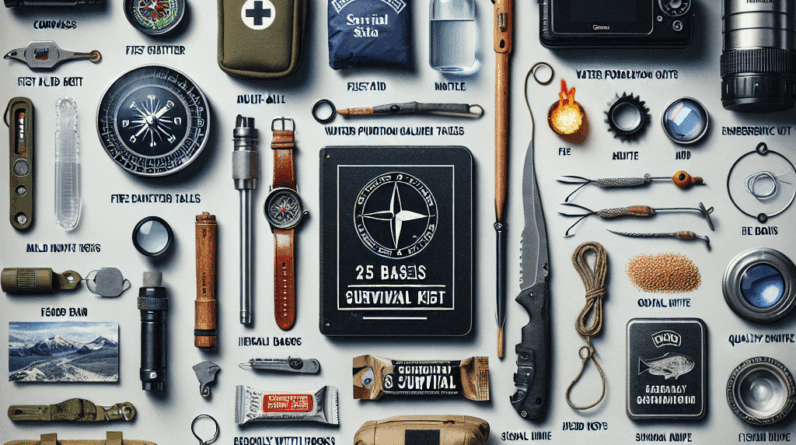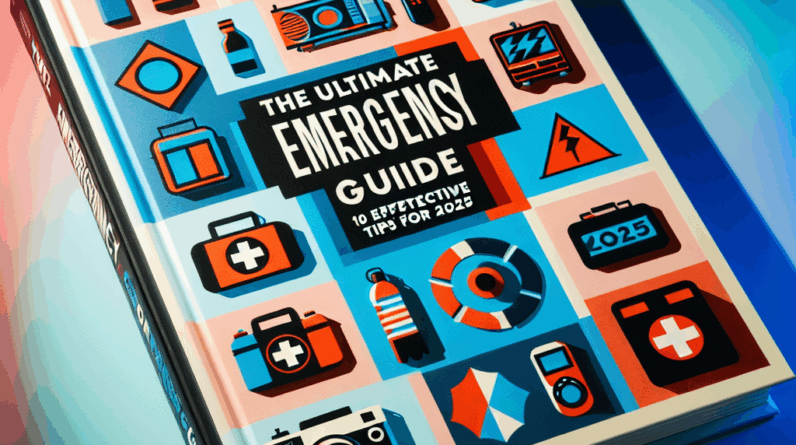Assess the Situation Thoroughly
Understanding the Scope of the Emergency
When an emergency strikes, the first thing I do is take a deep breath and assess the situation. Understanding the scope is essential. You gotta figure out what exactly is happening, right? Is it a natural disaster, a medical crisis, or something else? Each type of emergency has its own unique demands.
As I gather information, I try to consider the immediate effects—what resources are most urgently needed? I usually jot down notes to keep my thoughts organized. It’s amazing how just writing things down can help clarify the chaos in my mind. Trust me, it’s a game-changer.
Also, remember to involve others if you can. Two (or more) heads are better than one. Getting feedback from team members or people on the ground helps in gaining different perspectives that I might overlook.
Gather Critical Resources
Next up is gathering all the critical resources. This is where the rubber meets the road. I like to make a checklist of what we need: food, water, medical supplies, you name it. Having a physical list keeps me focused and accountable.
Don’t be shy about asking for help! You’d be surprised at how many people want to pitch in during a crisis. Local businesses, community groups, and even neighbors can often provide assistance or donations. Teamwork is key in these situations.
Lastly, I keep a close eye on the inventory. It’s important to monitor what resources are being used and what we still have left. This helps prevent unnecessary wastage and ensures we’re not left high and dry when things get really tough.
Check Communication Channels
You can’t manage resources effectively if you can’t communicate. That’s why I always make sure that communication channels remain open. I assess all available methods—phones, radios, social media—and see what works best for us.
In emergencies, tech can be spotty, so it’s crucial to have backup plans. For example, setting up a designated meeting spot or alternate contact method is really helpful. I always let everyone know what the backup plan is right from the get-go.
It’s also a good idea to keep everyone in the loop. Regular updates go a long way in boosting morale and ensuring that everyone knows their roles and responsibilities as we navigate through the emergency.
Implement a Resource Allocation Plan
Prioritize Needs
Alright, after assessing and gathering, it’s time to get down to the nitty-gritty of allocating resources. I usually sit down to prioritize needs. Not everything is an emergency, and I like to sort things by urgency. Life-saving necessities always come first: think food, water, and shelter.
This requires tough decisions, and I won’t lie, it can be a bit stressful. I often refer back to that checklist I made earlier. It’s like a map that guides me through the maze of decisions I need to make.
Also, I make it a point to communicate these priorities to the team. Everyone should be on the same page. We don’t want anyone running around wasting time on something that can wait!
Allocate Resources Efficiently
Resource allocation isn’t just about deciding what goes where. It’s also about doing it efficiently. That’s why I always consider transportation and delivery methods. How are we going to get food supplies to those who need it most?
Whenever possible, I try to optimize routes, especially if there is transport involved. Using maps or mobile apps can save a ton of time and energy. Believe me, anything to avoid getting stuck in traffic—especially during an emergency—is a win!
I also monitor how people are coping with the resources they receive. If I see one area is running low, I might redistribute from another area that doesn’t seem to need as much right away.
Track Resource Usage
Tracking resource usage is critical, and I can’t stress this enough. It’s all about keeping things transparent and accountable. I often use spreadsheets or apps designed for this kind of stuff—it keeps everything neat and tidy.
Get Preparedness and Self-Reliance Tips. Subscribe Now!
Moreover, I try to have regular check-ins. These meetings can be quick, but it’s essential that everyone knows what’s being used up, what’s still available, and what might be running low. Regularity assures that no resource goes unaccounted for.
This also builds trust among the team. When everyone is aware of the situation, it reduces panic and allows us to focus on solutions, rather than worrying about what might be missing.
Review and Adjust Strategies
Evaluate Resource Effectiveness
After everything’s said and done, it’s time to review how effective our resource management was. Evaluating is key to learning from the experience. I often conduct follow-up meetings to discuss what worked and what didn’t.
Using feedback from the team can be invaluable. They often have insights that I didn’t consider, and I always appreciate that. The best way to improve is to learn from mistakes and successes alike.
I document these evaluations for future emergencies. Trust me; keeping a record can save you a lot of time and trouble later on. It’s like having a playbook for when things go south again.
Make Necessary Adjustments
Once I gather all the feedback and results, I start making necessary adjustments. This might involve updating our resource allocation plan or changing the way we gather information. Anything that makes the process smoother is a win in my book.
I also recognize that emergencies can change quicker than we might expect. So, it’s crucial to remain flexible and ready for anything. Sometimes, having a Plan B, C, and D is the way to go!
And always remember: practice makes perfect. The more I engage in emergency planning and management, the better I become. It’s all about the experience.
Communicate Changes to the Team
Finally, I always take the time to ensure everyone understands any changes made to our plans or processes. Clear communication is vital in this stage. It minimizes confusion and keeps everyone on the same page as we move forward.
In my experience, regular updates have been essential. I often use group chats or emails to keep the team informed, and I encourage them to share their experiences as well. Collaboration is key!
A well-informed team can adapt more effectively to changes, making the entire process more efficient. Plus, it fosters a sense of community—something we all need during tough times.
Frequently Asked Questions
1. What’s the first step in managing resources during an emergency?
The first step is to thoroughly assess the situation by understanding the scope of the emergency and what resources are urgently needed.
2. How can I ensure effective communication during an emergency?
Keeping communication channels open is critical. Utilize multiple platforms and have a backup plan to ensure everyone stays updated.
3. Why is tracking resource usage important?
Tracking ensures transparency and helps manage resources efficiently, preventing shortages and waste.
4. How can I prioritize needs effectively?
Prioritize life-saving necessities first and then allocate resources to less urgent needs as the situation evolves.
5. What can I do to improve for next time?
After an emergency, evaluate what worked and what didn’t, and make necessary adjustments for future situations. Documentation is key!




